Journal of the NACAA
ISSN 2158-9429
Volume 13, Issue 1 - June, 2020
Effectiveness of Regional Beef Newsletter
- Ball, S. , Extension Educator, University of Idaho
Jensen, S., Extension Educator, University of Idaho
Dyas, E., Student, University of Idaho
ABSTRACT
The focus of the Extension branch of Land Grant Universities throughout the country has always been to provide current information and research-based practices to the public in a timely and effective manner. The Cattlemen’s Corner Beef Newsletter, published by the University of Idaho (UI) Owyhee County Extension Office was created with these same goals and purposes in mind. Over the past 12 years, the number of individuals receiving the newsletter in southwestern Idaho counties has grown. In 2017, an assessment survey was developed to examine the significance of the newsletter and to help determine its usefulness to the individuals receiving it. Participants’ response to the survey provided useful information on the impacts and value of the Cattlemen's Corner Beef Newsletter.
INTRODUCTION
Production agriculture is vital to the economy of Idaho. University of Idaho Extension helps agricultural producers thrive throughout the state by informing them about current issues, new production practices, and other relevant factors. The Cattlemen’s Corner Beef Newsletter was created in 2005 to provide this type of information to local producers. This bi-monthly newsletter is being mailed to approximately 785 beef cattle producers and other interested individuals in 11 southwestern Idaho counties and one southeastern Oregon county. This newsletter is an effective method for informing ranchers, farmers, educators and other interested parties about current topics in beef cattle production. The Cattlemen’s Corner focuses on recent research, ideas, and practices to assist its audience in their operations. Specialists, educators, and others contribute their knowledge through newsletter articles on a variety of topics. A survey was conducted in June 2017 to determine the value and impact of the Cattlemen’s Corner Beef Newsletter, which is described in this article.
REVIEW OF LITERATURE
While extensive information has been collected on the impact of newsletters around the world, an evaluation of this specific newsletter was needed to identify reader perceptions on its usefulness and value as well as to determine what changes were needed for continuation of the newsletter into the future. Examination of significance and usefulness of the Cattlemen’s Corner Beef Newsletter involves review of many factors, including circulation, topics, and relevance. This study was developed to determine value of the Cattlemen’s Corner newsletter, methods to improve the newsletter, and willingness to receive an online edition. The following is a review of literature related to approaches used to determine usefulness of newsletters for communication.
Many approaches to educational communication exist. Land-grant institutions are tasked with serving the public with science-based education (Robinson, 2013). This comes with a challenge of getting that information from the university and dispersing it throughout the state (Robinson, 2013). As educators it is our job to find the best way to communicate with our audience (Robinson, 2013). Researchers have continued to expand their knowledge about adult education and have found that there are four requirements to adult learning: stimulation, meaning, order, and strategy (King & Rockwell, 1988). Leaving out any of these requirements can lead to a reduction in educational effectiveness for adults (King & Rockwell, 1988).
Newsletters have been used for decades as a way to disperse information. In a study conducted by Martinson et al. (2010) horse owners desired brief information that was timely and research-based. Participants were mainly between the ages of 30 and 60 (83%), and most (86%) were women. Approximately 37% of respondents said they wished the newsletter was longer than two pages and included more articles. More than 70% of participants indicated reading the entire newsletter and 82% implied that they frequently referred back to the newsletter. Newsletter recipients noted that they preferred receiving educational materials through workshops, website information, on-line courses, printed materials or factsheets.
A study conducted by Thompson et al. (2015) indicated that changing technologies have changed preferences for modes of communication (Jacobson, 2003; Seitsinger et al., 2008; Thompson, 2008). The modes of communication measured included email and written communication. The study discovered that participants preferred email (12.6%) and printed (1.2%). Most research would support using digital tools for communication, as it allows immediate access to information (Timmerman & Kruepke, 2006). Findings from this study also revealed that a combination of modes helped participants gather information in multiple ways.
OBJECTIVES
The overall objective of this survey was to determine its value to our audience. Specific survey objectives included:
- Practices implemented from previous newsletters
- Suggestions for improvement
- Input on frequency of publication
- Interest in receiving an online version
The number of recipients for this newsletter is currently 785. Since 65 of these are businesses, there were excluded from the survey, leaving the final number at 720 individuals.
METHODOLOGY
A mailed survey was used to assess the usefulness and impact. Additionally, an online option through SurveyMonkey® was offered for those who preferred to respond electronically. All 720 recipients of the newsletter received the survey through mail and were informed of the online response option. A return envelope was provided with the mailed survey. Both the mailing and the return addresses were addressed to the UI Owyhee County Extension office in order for the surveys to be anonymous. If the recipient decided to complete the online version of the survey, all they had to do was copy the link into their search engine, which would then take them directly to the survey.
The survey consisted of nineteen questions, including nine multiple choice questions, six Likert scales, three open-ended, and one fill-in-the-blank question. These different formats allowed respondents to express their opinions and ultimately provided for in-depth feedback. Two weeks after the original surveys were sent, a reminder postcard was mailed to all participants. The postcard thanked those who had already participated, reminded those who hadn’t and provided a URL for the online survey.
RESULTS AND DISCUSSION
Of the 720 survey recipients, 116 that responded to the survey, for a response rate of 16%. Ten participants (9%) responded online, with the remaining 91% using the U.S. Postal Service for their survey responses.
The first two survey questions were demographic in nature, focusing on respondents’ age and agricultural background. More than 60% (n = 78) of participants identified as ranchers (Figure 1). Question two indicated the age of respondents. The majority of respondents were 50 to 80 years of age.

Figure 1. Primary interest in agriculture
The data for the topics that were found most useful in the newsletter are reported in Figure 2. The survey participants were able to circle all that applied and gave the results a more detailed perception on how the reader felt about the information in the newsletter. Overall pasture management was identified as the most useful topic to readers. Over 71% (n = 75) of respondents choosing this topic. Many people did choose multiple answers which resulted in a high percentage in toxic plants and feeding/mineral supplementation.

Figure 2. Useful newsletter topics
More than 90% (n = 170) of respondents indicate that newsletter information was current and/or reminder/refresher and is reported in Figure 3. Outdated information was rarely chosen by participants.

Figure 3. Usefulness of newsletter information
Greater than 90% (n = 105) of respondents indicated that the newsletter should be continued as shown in Figure 4. Those that did not want the newsletter to be continued asked to be removed from the newsletter mailing list for reasons that concerned retirement or a reduced interest in the agriculture industry.

Figure 4. Continuation of the Newsletter
When ask to report their knowledge of online access to the newsletter less than 30% (n = 29) of participants knew that it was available online. Results of this question are shown in Figure 5. This clearly showed that most of the readers did not know that the newsletter was available online. The directions for this question stated that if circling the answer “no” to skip question 7.
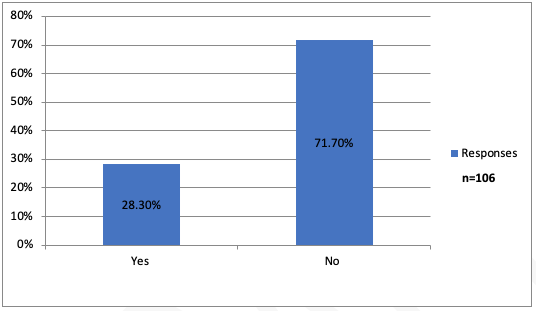
Figure 5. Online newsletter
The few readers that did know the newsletter was available online had normally never accessed it. The results show again that most readers had never accessed the online version as displayed in in Figure 6.
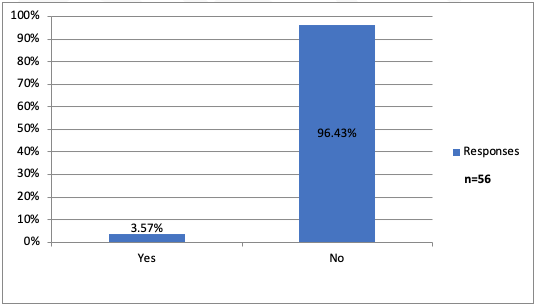
Figure 6. Respondents who have accessed the newsletter online
Technology has grown over the last decade and now most people have access to the internet and receive emails daily. The participants were asked if they would prefer receiving an online/digital edition of the newsletter rather than a paper copy knowing it could change the way the newsletter is produced. The results shown in Figure 7 confirm that most would still prefer receiving the paper edition. These results, combined with information from question 2, showed that the newsletters older audience would rather read a printed copy versus the younger generations who are now relying more on technology.
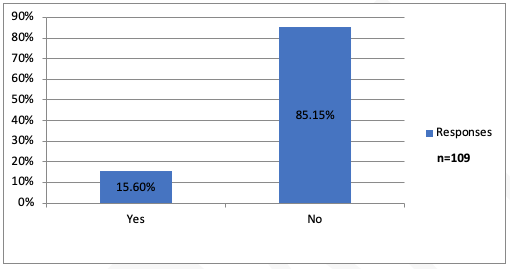
Figure 7. Online/digital version
Over 60% (n = 70) of participants selected “helps keep track of new knowledge", and “highlights research important to my operation” as their most important reasons for reading the newsletter (Figure 8). The instructions for this question stated “please select one answer that is most important to you." Many participants did not read the instructions and they showed a trend of circling both B “helps keep track of new knowledge” and D “highlights research important to my operation." Very few chose the other answers.
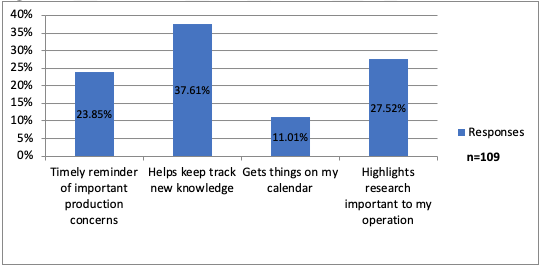
Figure 8. Newsletters best attributes
Out of all of the multiple-choice questions, the question pertaining to potential changes that could be made to the newsletter was skipped the most often. This could be due to the participants not agreeing with answers or they did not want the newsletter to change. Sixty participants answered this question and the results showed that they wanted the newsletter to be published more frequently which is shown in Figure 9.
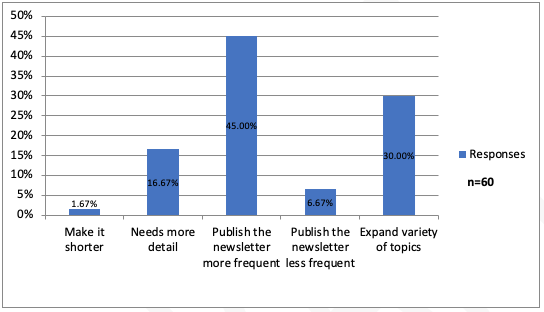
Figure 9. Changes to the newsletter
Questions 11 through 16 were on a scale of 0-100. The following results for each of these show how the participants selected their likelihood that information applied to them. In Figure 10 the information applied to the reader often.
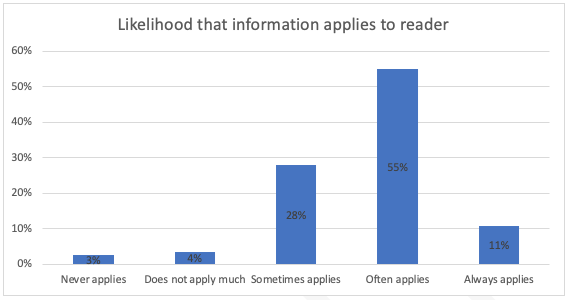
Figure 10. Applied information
Figure 11 answer selections show that most of the respondents felt that the information was moderately important followed closely behind very important. Normally the information that is in the newsletter is to educate the readers which could lead to the results in Figure 12.
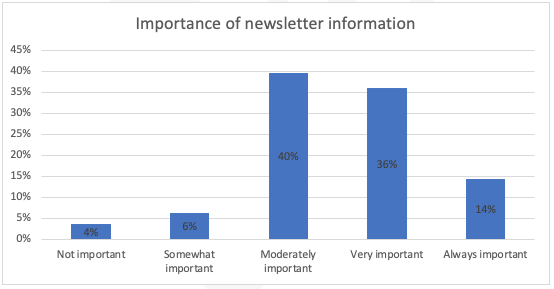
Figure 11. Importance of information in the newsletter
The newsletter does suggest different production practices. To have knowledge that the newsletter is being moderately useful is shown in Figure 12. This indicates that the Extension office should continue to include articles that discuss production practices.
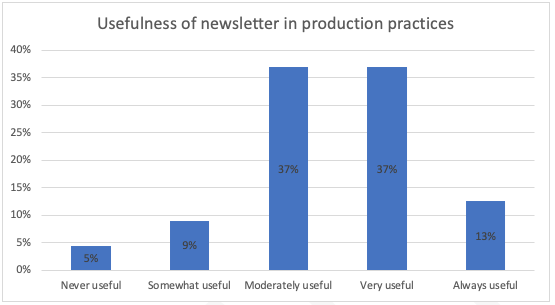
Figure 12. Usefulness of production practice information in newsletter
Figure 13 represents participants answers that the newsletter is being mostly read which could contribute to how much knowledge the reader is gaining.
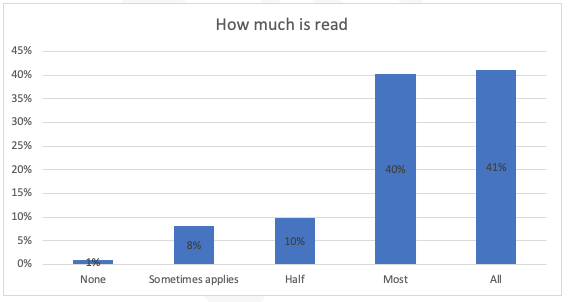
Figure 13. Percent of newsletter read by respondents
Participants who responded to the survey rated the newsletter very good as represented in Figure 14. Many participants stated that they currently like the newsletter the way it is or they do have high regards for the newsletter.
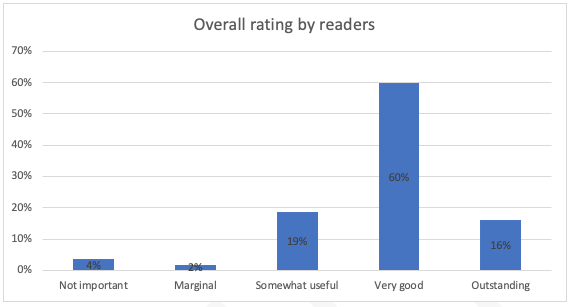
Figure 14. Rating of the newsletter
Participants did find the information of the newsletter to be often valuable. This could correlate with how much they read which is in Figure 13. If readers find the information valuable, they will be more likely to continue reading the newsletter. Results of this are shown in Figure 15.
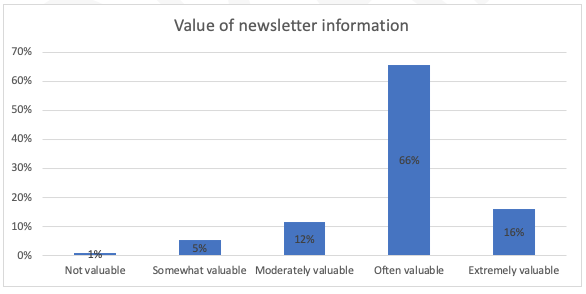
Figure 15. Value of information received through the newsletter
Questions 17 through 19 were short answer questions. For each question, the results are presented by topics that were most frequently identified by the respondents. The number next to those categories represents percentage of respondents which stated that. Long answer questions are the most skipped in surveys and were the most skipped in this survey as well.
Question 17: What topics would you like to see covered more?
- Pasture Management (29%)
- Current topics (20%)
- Marketing (16%)
- Other topics
- Weed control
- Range management
- Grazing times
- BLM/Fire
- State and federal legislation
- Nutrition and genetics research
- Small producers
- Sale reports
- Market prices
- Local economics
- Beef Quality Assurance
- Calving Season
- 4-H
Question 18: Have you implemented any practices that the newsletter has suggested? If so please indicate which practices and how you have implemented them?
- Pasture Management (28%)
- Vaccines (21%)
- Beef Quality Assurance (13%)
- Other
- Rotational grazing
- Weed management
- Vaccine handling
- Refrigeration of vaccines
- Management practices
- Animal handling
- Weaning strategies
- Mineral supplementation
Question 19: What is something you’ve learned from the newsletter?
- New information (34%)
- Vaccine (20%)
- Cattle (15%)
- Other
- Reminders/Refreshers
- Ag issues
- Topics throughout the industry
- Management practices
- Vaccine handling
- Proper procedures
- Feed values
- Cattle management
- Beef quality assurance
- Pasture management
- Mineral supplements
- Weed control
CONCLUSIONS
This article is a compilation of the results of the June 2017 Cattlemen’s Corner Beef Newsletter Survey. This brought a perspective on how the newsletter is interpreted.
Results found that the newsletter should continue to be published and frequency of publication could be increased as suggested by question 10. In addition, an overwhelming majority of readers still prefer a paper copy of the newsletter. The findings also showed that many readers had never accessed the online version of the newsletter.
Considering that many participants’ primary interest was in ranching, many of answers were about cattle. One suggestion that was made is they would like more detailed pasture management articles to be included. They also noted they had learned about vaccine handling. The information in the newsletter was found to be current information or a reminder, and it often applied to them. There were very few people who said the information was old or not useful to them.
Many of the readers read most of the newsletter allowing them to take in as much information as possible. Multiple comments were left at the end of the survey reassuring that the newsletter is very useful in its current format.
REFERENCES
Jacobson, L. (2003). Phila. Parents to receive marks for “home support” of students. Education Week, 23, 4.
King, J. W., & Rockwell, S. K. (1988). Communicating with the adult learner. Journal of Extension, 26(1), 1-2.
Martinson, K., Wieland, E. G., & Bartholomay, T. (2010). Evaluation of an electronic horse owner newsletter. Journal of Extension, 48(2), 1-11.
Robinson, P. (2013). Effectively Communicating Science to Extension Audiences. Journal of Extension, 51(2), n2.
Seitsinger, A. M., Felner, R. D., Brand, S., & Burns, A. (2008). A large-scale examination of the nature and efficacy of teachers’ practices to engage parents: Assessment, parental contact and student-level impact. Journal of School Psycholgy, 46, 477-505. doi: 10.1016/j/jsp.2007.11.001
Thompson, B. (2008). Characteristics of parent-teacher email communication. Communication Education, 57, 201-203. doi: 10.1080/0363452070
Thompson, B. C., Mazer, J. P., & Grady, E. F. (2015). The changing nature of parent-teacher communication: mode selection in the smartphone era. Communication Education, 64(2), 187-207. doi: 10.1080/03634523.2015.1014382
Timmerman, C. E., & Kruepke, K. A., (2006). Computer-assisted instruction, media richness, and college student performance. Communication Education, 55, 73-104. doi: f10.1080/03634520500489666
